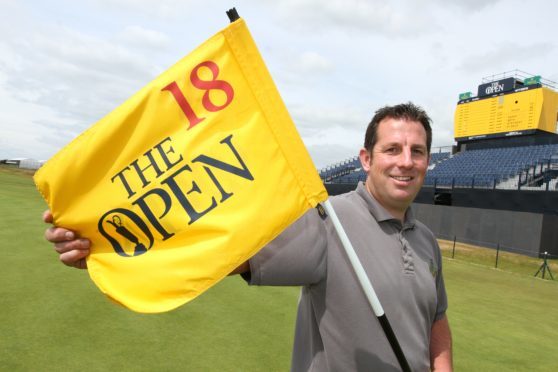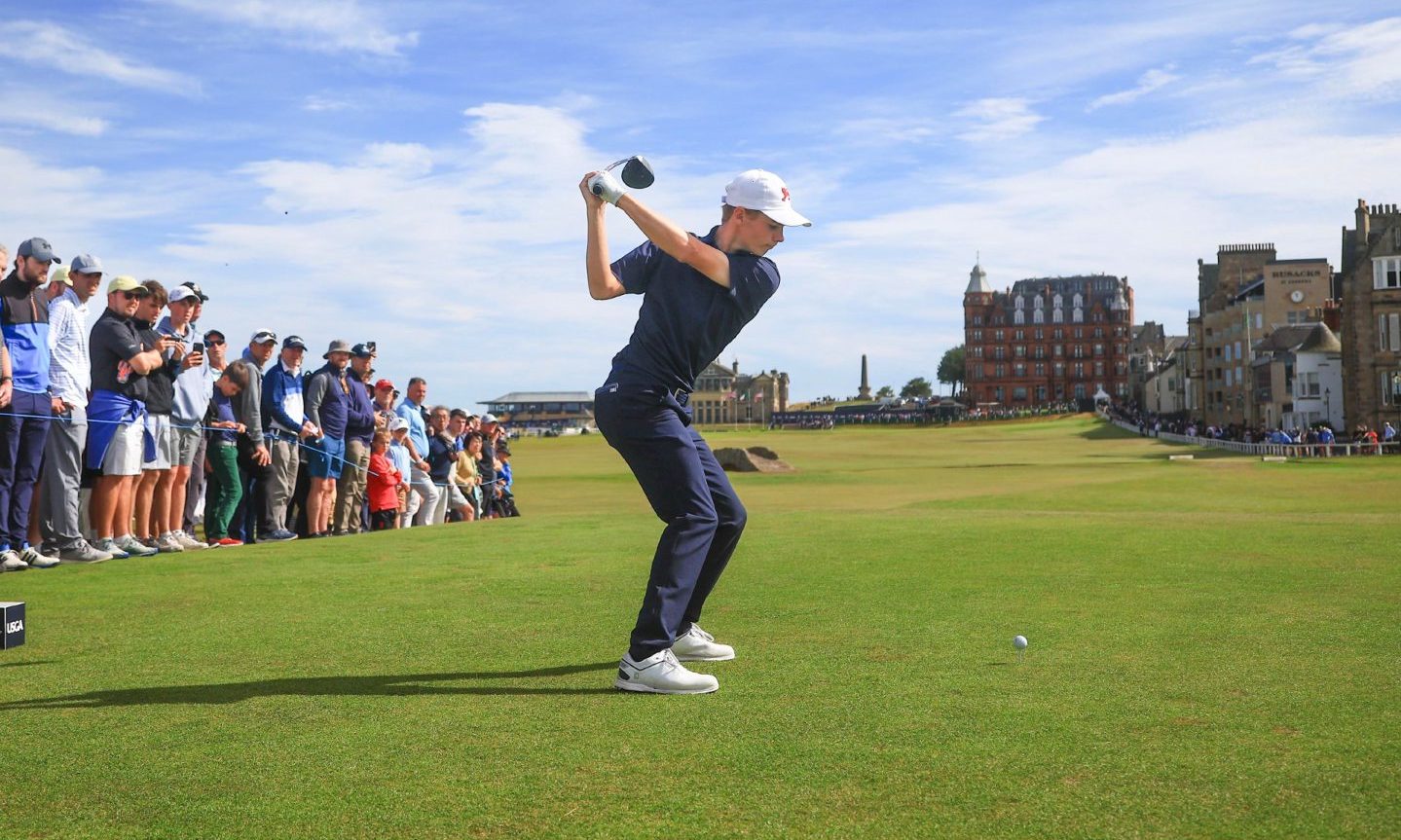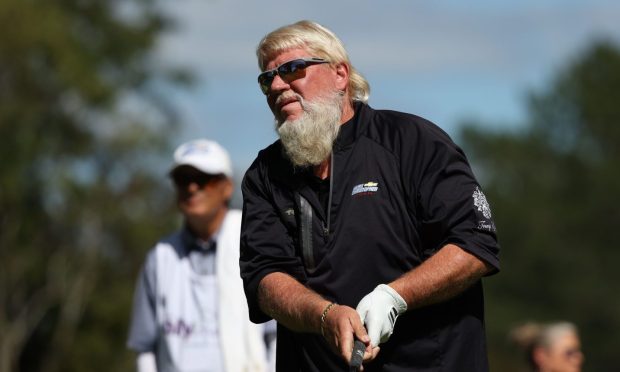Hundreds of children will leave school these next few weeks with not a clue about what they want to do with their lives. Craig Boath never had that problem.
A Wellbank boy, in his final year at school Craig did his statutory work experience for a week down at Carnoustie Golf Links, and that was all it took for the bug to bite. The day after he left school he was at the links badgering the head greenkeeper, John Philp, for a job on his staff.
Philp, who led the transformation of Carnoustie from a neglected treasure in the eighties back to being arguably the best conditioned links golf course there is, is still not a man who is easily impressed. But he obviously saw something in the hyper-keen teenager.
23 years later, Craig’s the man in charge of the town of Carnoustie’s prize asset, the “Medal”, or the Championship Course as it’s better known outside the town. He’s worked his way up from 16-year-old apprentice greenekeeper, just like his predecessor Sandy Reid, who succeeded Philp as the Links Superintendent in 2011.
That lineage is a hugely important part of why the Carnoustie greens team is universally admired in the industry. There are former staffers from the sheds behind the 10th green of the Medal at courses all over the world of golf.
“It’s what you would want in a job, knowing that there’s a pathway through,” said Craig, taking a short break from the fine-tuning of the course ahead of this July’s Open, the eighth time the Angus links has hosted the championship and the third since Philp started the transformation.
When one of the holes on the course – the 11th – is named after one of your predecessors who still takes an avid interest in its condition, that’s some kind of peer pressure.
“I joined in 1995, John was in charge of the Championship course then, then Sandy was in charge in 2007 and I was his deputy, and now this year I have the responsibility for Championship Course,” continued Craig,
“It’s an important thing, John passed it to Sandy, and from Sandy on to me. I really feel part of that, we need to keep that standard going. There is a wee bit of pressure there, especially from John because he’s still around of course!
“But we look up to John, we want to make him proud as well. You want to keep this reputation going.”
It takes a special kind of care, however. Both St Andrews and Carnoustie are public links and get far greater footfall than your average private golf course, in Carnoustie’s case 40 to 45,000 rounds a year.
“We have 3500 pairs of feet traversing the course every week, players and caddies,” points out Craig. “We always have to be on top of water use, seed germination. We have a fantastic staff here who do a great job because it is a challenge.”
There have been relatively few changes at Carnoustie since 2007 – some more spectator mounding, and the troublesome third hole was altered again after input from players at the RICOH Women’s British Open of 2011. There are now options to play the short par four rather than an iron and wedge as became standard.
Overall, this year may be as challenging as any. The driest May in the two decades Craig has been here was preceded by a cold snap that saw snow cover as late as mid-March – “The Beast from the East” blanketed Carnoustie and put growth about “three weeks back”.
“We’re only catching up with that now,” said. Craig. “We had barely 9mm of rain the last six weeks.”
The R&A, usually represented by championship committee chairman Clive Brown and chief executive Martin Slumbers, must be rubbing their hands about that with a great chance – the generally dry spell continuing through June – of getting the fiery and fast conditions they prefer for The Open. But it’s a tricky balancing act for Craig and his staff.
“We’re lucky because even though it sometimes looks greener we have one of the firmer courses underfoot already, definitely the firmest out of all the Open venues,” said Craig. “Even putting water on the course we’re not softening it much.”
Fairway heights have been kept up during the last few weeks because timing is everything if the course is to be at optimum – “anorexic greenkeeping” as former R&A chief Peter Dawson sued to indelicately call it – for the championship.
“We’ve plenty of time to dry the course out if we need to do it,” says Craig. “We have that in our bag, we’ve learned before you can go too quickly for tournaments.”
That was not 1999, however, when the course’s reputation as the Open’s most fearsome challenge was entrenched from probably all time.
“I thought the condition of the course in `99 was superb,” continued Craig. “Okay there could have been bits of rough that were tapered a little more, but the course was good.
“What’s happened since then has been fine-tuning. We’ve worked on our rough, getting rid of the poorer grasses and getting finer leaf grasses in there, and it’s improved dramatically. The scenario from 1999 won’t happen again.
“The bottom line is that the pros will have to play this course, there are no shortcuts. And it’ll be the same for everyone.”
And Carnoustie usually produces drama, as Craig points out.
“The last three Opens have gone to play-offs here,” he continued. “Hopefully not this year, though, because we’ll certainly be due a few beers after it’s finished.”




